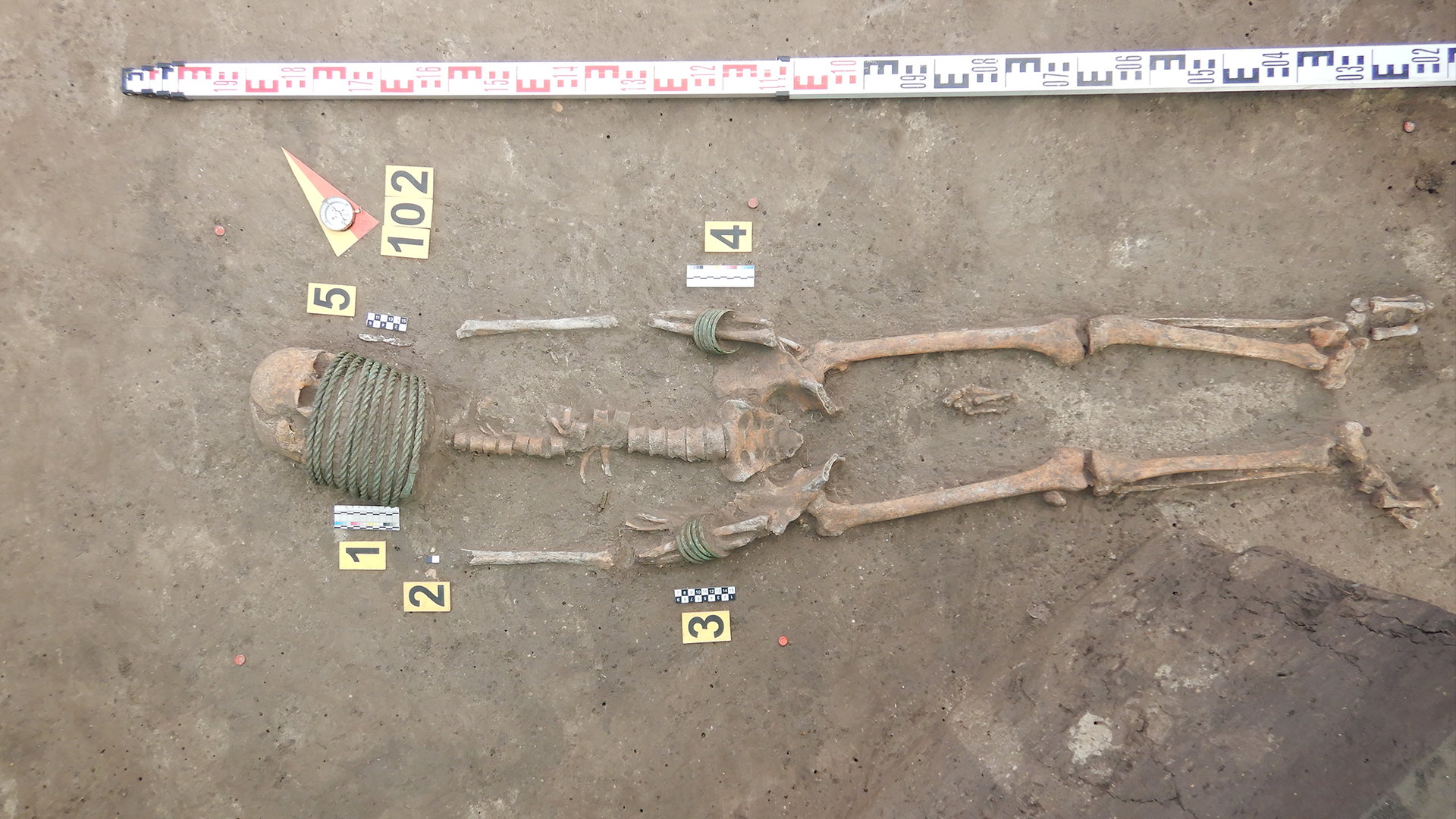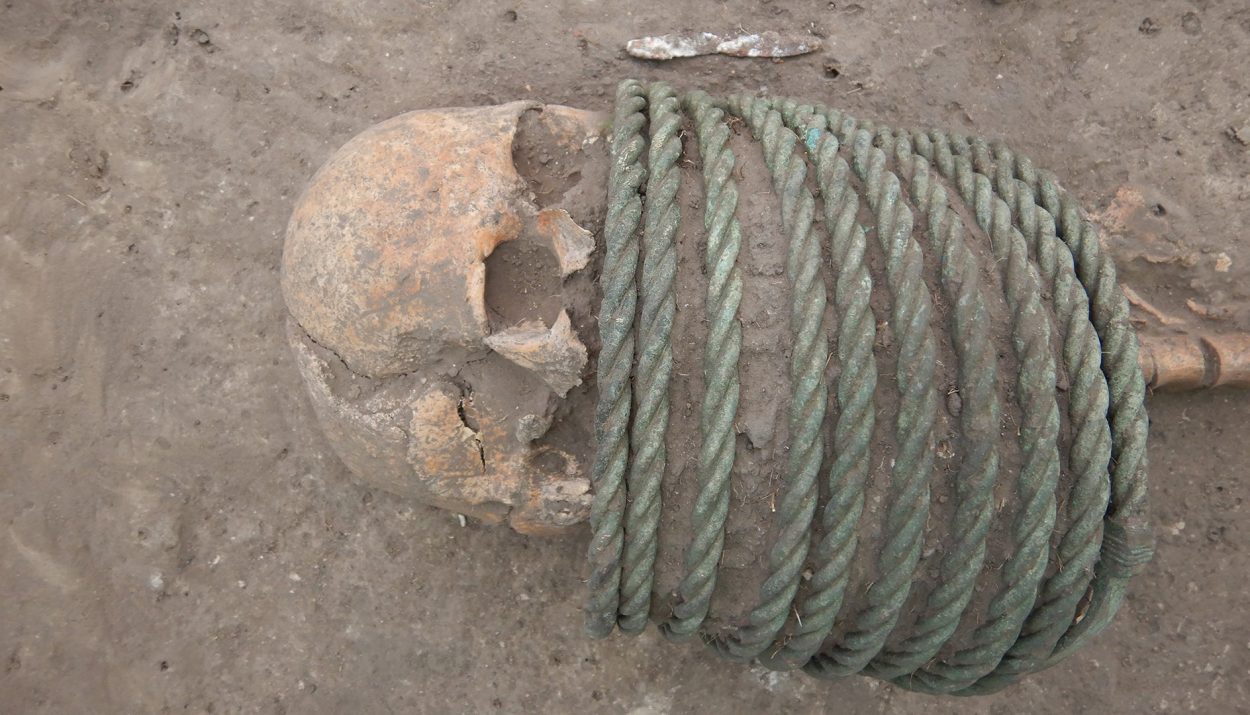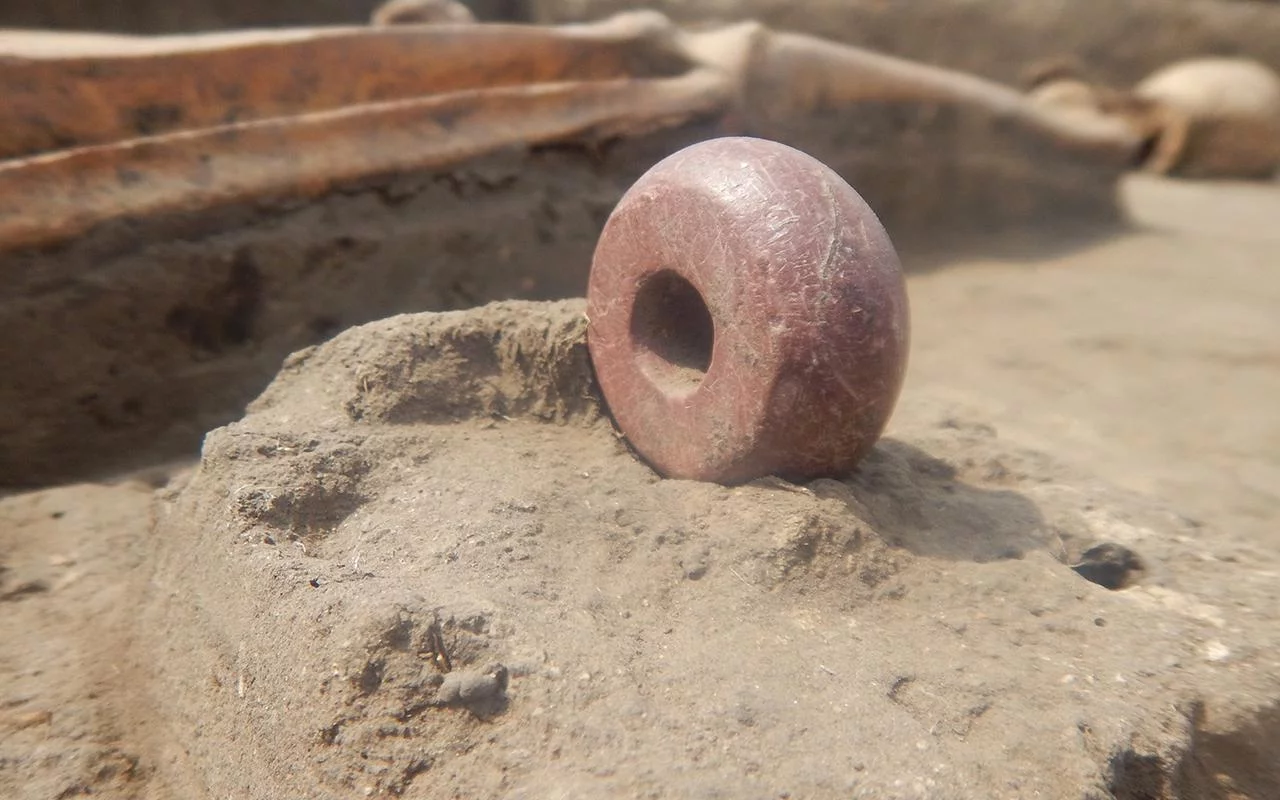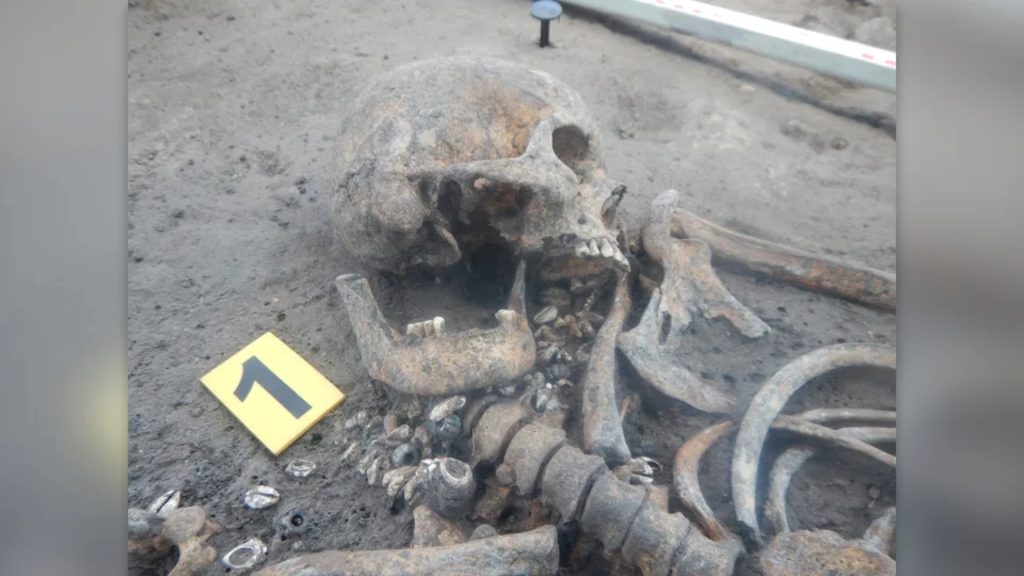The Ostriv Cemetery, located just south of Kyiv, Ukraine, is a significant archaeological site that offers profound insights into the cultural, social, and spiritual practices of the Kyivan Rus during the 11th century. This period was marked by the interplay between traditional pagan beliefs and the spread of Christianity, and the discoveries at Ostriv provide a unique glimpse into this transformative era.
Grave Orientation and Ritual Practices
The graves at Ostriv exhibit unusual orientations, primarily aligned south and west, which contrasts with the typical northward alignment found in other Kyivan Rus burial sites. This deviation could indicate unique local traditions or external cultural influences specific to the Ostriv community. One of the most intriguing features is the presence of wooden buckets placed at the feet of several burials, an uncommon practice that may have held spiritual or ritualistic significance connected to funerary customs.

Social Hierarchy Reflected in Grave Goods
The artifacts recovered from the graves highlight the social structures and roles within the community. Men were often buried with weapons such as axes, spearheads, and swords, symbolizing their roles as warriors or leaders. Women’s graves, in contrast, contained bronze jewelry, including intricately designed neck and arm rings, signifying social status and personal wealth. These adornments not only reflected the societal norms of the time but also offered insights into the aesthetic preferences and values of the community.

Syncretic Religious Practices
The discovery of a stone altar at the site points to a fascinating coexistence of Christian and pagan rituals. This syncretism mirrors the broader religious dynamics of the Kyivan Rus, as the region transitioned to Christianity under rulers like Volodymyr the Great. The cemetery serves as a compelling snapshot of this transitional phase, with burial practices that blend traditional pagan customs and emerging Christian influences.
Broader Connections and Cultural Influences
Artifacts from Ostriv bear similarities to those found in the Baltic region, suggesting possible cultural exchanges or migration. This aligns with the historical context of the Kyivan Rus’s expansion under Volodymyr the Great, which brought the integration of various cultural practices. However, the absence of cremation burials—a hallmark of Baltic traditions—underscores Ostriv’s distinct cultural identity within this broader network of influences.

Modern Challenges and Preservation Efforts
The preservation of Ostriv Cemetery faces considerable challenges due to ongoing conflict in Ukraine. The Russian invasion has disrupted archaeological research and placed this invaluable site at risk. Despite these challenges, the findings at Ostriv underscore the critical need to protect and study Ukraine’s cultural heritage, ensuring its legacy endures for future generations.

Cultural Significance of the Ostriv Cemetery
The Ostriv Cemetery is more than a burial ground; it is a rich historical record that captures the societal structures, spiritual beliefs, and cultural exchanges of the Kyivan Rus. Its graves and artifacts reveal a dynamic interplay of ancient traditions and evolving religious practices during one of Ukraine’s most pivotal historical periods.
Each discovery at Ostriv deepens our understanding of the Kyivan Rus’s role in medieval Europe and highlights the enduring cultural richness of Ukraine’s history.

